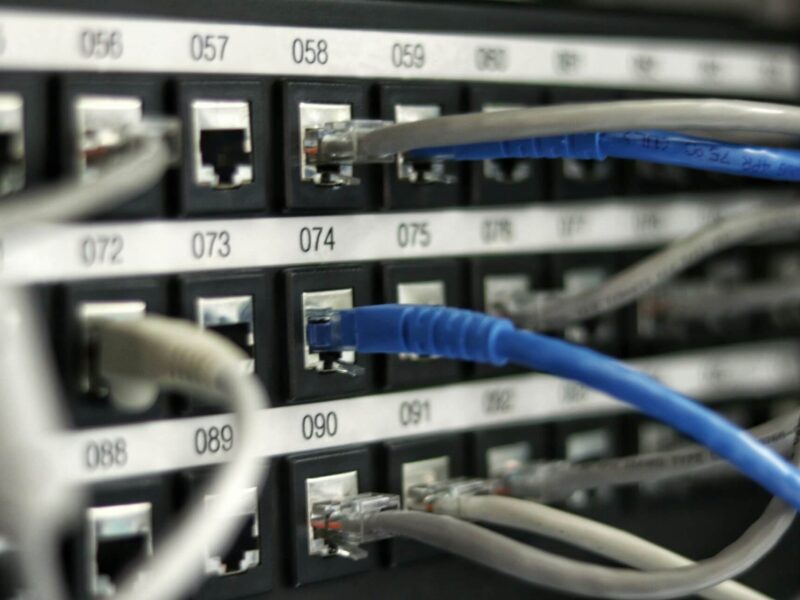In the ever-evolving landscape of technology, edge computing has emerged as a transformative force, promising to reshape how data is processed and managed. For tech enthusiasts and IT professionals alike, understanding the implications and potential of edge computing is crucial. This blog post delves into what edge computing is, how it works, its role in data processing and IoT, and the future trends that could define its trajectory.
What is Edge Computing?
Edge computing is a distributed computing paradigm that brings computation and data storage closer to the devices where it is being generated, rather than relying on a central data-processing warehouse. This proximity to the source of data can significantly reduce latency and bandwidth use, making it an attractive solution for applications that require real-time data processing.
As industries increasingly embrace innovative technologies, the emergence of edge computing is transforming how data is processed and managed. This shift enables faster data analysis by bringing computation closer to the source, reducing latency and bandwidth usage significantly. One of the key players in this space is Engage Studio, which leverages edge computing to enhance customer engagement and experience. By integrating real-time data processing into their services, companies can deliver tailored solutions that meet the dynamic needs of consumers, click here to learn more.
Unlike traditional cloud computing, where data must travel to a centralized data center for processing, edge computing processes data locally on “edge” devices like sensors, gateways, and IoT devices. This localized approach not only speeds up data processing but also enhances the efficiency and reliability of various applications.
How Does Edge Computing Work?
Edge computing operates through a network of edge devices that can process data locally or at nearby edge servers. Here’s a simplified breakdown of its working mechanism:
- Data Generation: Data is generated by edge devices such as sensors, cameras, and IoT devices.
- Local Processing: Instead of sending the data to a distant cloud server, it is processed locally on the device or a nearby edge server.
- Actionable Insights: The processed data can be used to make immediate decisions, actions, or analyses, significantly reducing the time lag associated with data transmission to and from central servers.
- Selective Data Storage: Only essential data, often aggregated or filtered, is sent to the cloud for long-term storage and further analysis, thereby optimizing bandwidth and reducing costs.
Edge Computing in Data Processing
One of the most significant advantages of edge computing is its ability to streamline data processing. Here’s how edge computing is revolutionizing this field:
Reduced Latency
By processing data closer to its source, edge computing minimizes the time it takes for data to travel back and forth to centralized data centers. This reduction in latency is vital for applications that require real-time or near-real-time data processing, such as autonomous driving, industrial automation, and healthcare monitoring systems.
Improved Bandwidth Efficiency
With the growing number of IoT devices, the amount of data generated is skyrocketing. Transmitting all of this data to the cloud can strain bandwidth and incur high costs. Edge computing addresses this challenge by filtering and processing data locally, sending only the most critical information over the network. This approach optimizes bandwidth usage and reduces overhead costs.
Enhanced Reliability
Edge computing can operate independently of centralized data centers, providing a more robust and reliable solution. In scenarios where connectivity to the central cloud is intermittent or unreliable, edge computing ensures that data processing continues without interruption. This reliability is crucial for applications in remote or mission-critical environments.
Edge Computing and IoT
The Internet of Things (IoT) is one of the primary drivers behind the adoption of edge computing. As IoT devices proliferate, the need for efficient and scalable data processing solutions becomes more apparent. Here’s a look at how edge computing complements IoT:
Real-Time Data Processing
IoT devices often require real-time data processing to function effectively. From smart home devices that adjust lighting and temperature based on sensor inputs to industrial IoT systems that monitor equipment health, edge computing enables quick and responsive data processing, enhancing the overall functionality of IoT applications.
Scalability
Edge computing supports the scalability of IoT networks by distributing data processing across numerous edge devices. This decentralized approach can handle the influx of data generated by a vast array of IoT devices, making it easier to scale operations without overburdening central servers.
Security and Privacy
With data breaches and cyber threats on the rise, edge computing offers enhanced security and privacy for IoT applications. By processing sensitive data locally, edge computing reduces the exposure of data to potential cyber-attacks during transmission. Additionally, localized data processing can help comply with data privacy regulations by keeping data within geographical boundaries.
Future Trends in Edge Computing
As edge computing continues to gain traction, several trends are emerging that could shape its future:
Integration with 5G Networks
The rollout of 5G networks promises to enhance the capabilities of edge computing. With lower latency and higher bandwidth, 5G can enable more efficient and powerful edge computing solutions. This integration is expected to drive advancements in areas such as augmented reality (AR), virtual reality (VR), and autonomous vehicles.
AI and Machine Learning at the Edge
Artificial intelligence (AI) and machine learning (ML) are increasingly being integrated into edge computing platforms. By deploying AI and ML models at the edge, devices can make intelligent decisions locally, enabling applications like predictive maintenance, advanced analytics, and personalized user experiences.
Edge-as-a-Service
Similar to the cloud computing model, Edge-as-a-Service (EaaS) is emerging as a new business model where edge computing resources are offered as a service. This approach allows organizations to leverage edge computing without the need for significant upfront investment in infrastructure, making it more accessible and scalable.
Enhanced Security Measures
As edge computing adoption grows, there will be a greater emphasis on developing robust security measures. This includes encryption, secure boot, and hardware-based security features to protect data and devices at the edge.
Conclusion
The emergence of edge computing marks a significant milestone in the evolution of data processing and IoT. By bringing computation closer to the data source, edge computing offers numerous benefits, including reduced latency, improved bandwidth efficiency, and enhanced reliability. For tech enthusiasts and IT professionals, staying informed about edge computing trends and developments is essential to harness its full potential.
As we look to the future, the integration of edge computing with technologies like 5G, AI, and machine learning will further revolutionize various industries, driving innovation and creating new opportunities. Embracing edge computing today can provide a competitive edge in the ever-evolving technological landscape.






